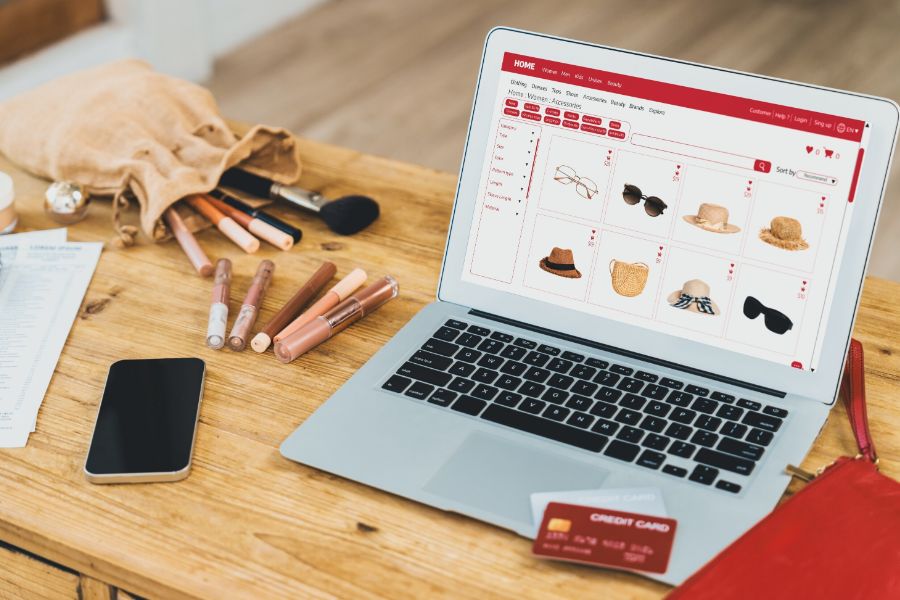Datafication is the process of collecting and analyzing data to gain insights and make informed decisions. This can help businesses improve their products and services, understand their customers better, identify opportunities and threats, and optimize their processes. According to a report by McKinsey, data analysis can help businesses increase their operating margins by up to 60%. That means you can save more money, invest more in your business, and grow faster than your competitors.
In this blog post, we will explore how datafication can benefit your business in various aspects, such as customer understanding, market intelligence, process optimization, and product innovation. We will also show you how ConnectPOS, a leading cloud-based point-of-sale system, can help you leverage data transformation to grow your business and avoid lost sales.
How datafication can help you understand your customers better
Segment your customers based on their behavior, preferences, and needs
One of the benefits of datafication is that it allows you to segment your customers into different groups based on their behavior, preferences, and needs. This way, you can tailor your products, services, and offers to each group and increase customer satisfaction and loyalty. For example, you can segment your customers by:
- Demographic factors such as age, gender, location, income, etc.
- Behavioral factors such as purchase frequency, recency, amount, etc.
- Psychographic factors such as interests, values, attitudes, etc.
- Needs-based factors such as convenience, quality, price, etc.
One of the techniques that you can use to segment your customers is clienteling. Clienteling is a technique used by retail sales associates to establish long-term relationships with key customers based on data about their preferences, behaviors, and purchases. Clienteling software can help you collect and store customer data, such as purchase history, wish lists, feedback, etc., and use it to provide personalized service and recommendations to your customers. Clienteling can also help you increase customer retention, loyalty, and referrals.
Personalize your marketing campaigns and offers based on customer data
Another benefit of datafication is that it enables you to personalize your marketing campaigns and offers based on customer data. Personalization can help you increase customer engagement, conversion, and retention by delivering relevant and timely messages and offers to your customers. For example, you can personalize your marketing campaigns and offers by:
- Using customer names and other personal details in your emails, SMS, or push notifications
- Sending personalized product recommendations based on customer preferences and purchase history
- Offering personalized discounts or rewards based on customer loyalty or behavior
- Creating personalized landing pages or web pages based on customer segments or profiles
- Using dynamic content or images that change according to customer data
Personalization can also help you reduce marketing costs by targeting only the most relevant and interested customers. According to a study by Econsultancy and Adobe, 44% of marketers reported that personalization resulted in increased sales.
Measure and improve customer satisfaction and loyalty using feedback and analytics
A third benefit of datafication is that it allows you to measure and improve customer satisfaction and loyalty using feedback and analytics. Customer satisfaction and loyalty are key indicators of your business performance and growth potential. By collecting and analyzing customer feedback and analytics, you can:
- Understand how your customers feel about your products, services, and brand
- Identify the strengths and weaknesses of your customer experience
- Discover the drivers and barriers to customer satisfaction and loyalty
- Monitor the impact of your actions on customer satisfaction and loyalty
- Implement improvements based on customer feedback and analytics
Some of the tools that you can use to measure and improve customer satisfaction and loyalty are:
- Surveys: Surveys are a common way of collecting customer feedback. You can use surveys to ask your customers about their satisfaction level, expectations, preferences, suggestions, etc. You can use different types of surveys such as post-purchase surveys, satisfaction surveys, net promoter score (NPS) surveys, etc.
- Reviews: Reviews are another way of collecting customer feedback. You can use reviews to get honest opinions from your customers about your products or services. You can also use reviews to showcase your social proof and attract more customers.
- Analytics: Analytics are a way of measuring customer behavior. You can use analytics to track various metrics such as website traffic, bounce rate, conversion rate, retention rate, churn rate, etc. You can also use analytics to test different variations of your website or marketing campaigns using A/B testing or multivariate testing.
How datafication can help you identify opportunities and threats in the market
Analyze market trends and customer demand using historical and real-time data
Datafication can also help you analyze market trends and customer demand using historical and real-time data. By analyzing market trends and customer demand, you can:
- Understand the current state of the market
- Identify the gaps and opportunities in the market
- Predict the future trends and demand in the market
- Adjust your product, pricing, and promotion strategies accordingly
One of tool you can use to analyze market trends and customer demand is ConnectPOS. ConnectPOS is a cloud-based point-of-sale (POS) system that helps you manage your retail business. ConnectPOS can help you track historical and real-time data such as sales, inventory, customers, etc. across multiple locations. You can use ConnectPOS to generate reports and dashboards showing market trends and customer demand for your products or services.
Monitor your competitors’ strategies and performance using web scraping and sentiment analysis
Datafication can also help you monitor your competitors’ strategies and performance using web scraping and sentiment analysis. By monitoring your competitors, you can:
- Learn from their best practices and avoid their mistakes
- Benchmark your performance against theirs
- Identify their strengths and weaknesses
- Find out their unique selling propositions (USPs) and differentiators
- Anticipate their moves and counter them effectively
Some of the tools that you can use to monitor your competitors are:
- Web scraping: Web scraping is a technique of extracting data from websites. You can use web scraping to collect data such as prices, products, features, reviews, etc. from your competitors’ websites. You can use tools such as Beautiful Soup or Selenium to perform web scraping with Python.
- Sentiment analysis: Sentiment analysis is a text analysis technique to determine the sentiment or emotion expressed within it. You can use sentiment analysis to measure customer sentiment towards your competitors’ products or services. You can use tools such as ChatGPT or OpenAI to perform sentiment analysis with Python.
Anticipate and respond to changing customer expectations and needs using predictive analytics
Datafication can also help you anticipate and respond to changing customer expectations and needs using predictive analytics. Predictive analytics is a technique of using data to make predictions about future outcomes or events. By using predictive analytics, you can:
- Forecast customer demand and sales
- Optimize pricing and promotions
- Recommend products or services to customers
- Detect fraud or anomalies
- Prevent churn or attrition
Some of the tools that you can use to perform predictive analytics are:
- Regression: Regression is a statistical method of modeling the relationship between a dependent variable (the outcome) and one or more independent variables (the predictors). You can use regression to estimate the value of the outcome based on the values of the predictors. For example, you can use regression to predict sales based on the price, season, advertising, etc.
- Classification: Classification is a machine learning method of assigning a label to an input based on its features. You can use classification to categorize the input into predefined classes. For example, you can use classification to predict whether a customer will buy or not buy a product based on their age, gender, income, etc.
- Clustering: Clustering is a machine-learning method of grouping similar inputs based on their features. You can use clustering to discover patterns or segments in the data. For example, you can use clustering to segment your customers based on their behavior, preferences, needs, etc.

How datafication can help you optimize your processes and operations
Automate and streamline your workflows using data-driven tools and systems
Datafication can also help you automate and streamline your workflows using data-driven tools and systems. By automating and streamlining your workflows, you can:
- Save time and resources
- Reduce errors and risks
- Increase efficiency and productivity
- Improve quality and consistency
- Enhance customer satisfaction
Some of the tools that you can use to automate and streamline your workflows are:
- Robotic process automation (RPA): RPA is a technology that uses software robots or digital workers to perform repetitive tasks that normally require human intervention. You can use RPA to automate tasks such as data entry, invoice processing, email handling, etc.
- Business process management (BPM): BPM is a methodology that involves designing, modeling, executing, monitoring, and improving business processes. You can use BPM to streamline your workflows by eliminating waste, improving communication, standardizing procedures, etc.
- Workflow management system (WMS): WMS is software that helps you manage your workflows by coordinating tasks, resources, schedules, dependencies, etc. You can use WMS to track the progress of your workflows, assign roles and responsibilities, set deadlines and reminders, etc.
Optimize inventory and supply chain with data visualization
Datafication can also help you improve your inventory and supply chain management using data visualization and optimization techniques. By improving your inventory and supply chain management, you can:
- Reduce costs and waste
- Increase revenue and profitability
- Meet customer demand and expectations
- Avoid stockouts or overstocking
- Enhance customer service
Some of the techniques that you can use to improve your inventory and supply chain management are:
- Data visualization: Data visualization is the representation of data through the use of common graphics, such as charts, plots, infographics, etc. Data visualization can help you communicate complex data relationships and data-driven insights in a way that is easy to understand. Some of the data visualization techniques that you can use are pie charts, bar charts, histograms, heat maps, box plots, etc.
- Optimization: Optimization is the process of finding the best solution or outcome for a given problem or objective. Optimization can help you improve your decision-making and resource allocation in inventory and supply chain management. Some of the optimization techniques that you can use are linear programming, integer programming, genetic algorithms, etc.
Enhance your product quality and innovation using data mining and machine learning methods
Datafication can also help you enhance your product quality and innovation using data mining and machine learning methods. By enhancing your product quality and innovation, you can:
- Increase customer satisfaction and loyalty
- Gain competitive advantage and differentiation
- Reduce defects and errors
- Foster creativity and experimentation
- Adapt to changing customer needs
Some of the methods that you can use to enhance your product quality and innovation are:
- Data mining: Data mining is the process of extracting information or patterns from large datasets. Data mining can help you discover new insights or knowledge about your products or customers. Some of the data mining techniques that you can use are classification, clustering, association rules, etc.
- Machine learning: Machine learning is a subset of AI that focuses on training computers to learn from data so that they can derive their insights with very little human intervention. Machine learning can help you improve your product performance or functionality by using data as feedback. Some of the machine learning techniques that you can use are regression, classification, clustering, etc.
Conclusion
Datafication is the process of collecting and analyzing data to gain insights and make informed decisions. Data-driven decision-making can help you make better business decisions and avoid lost sales by:
- Understanding your customers better
- Identifying opportunities and threats in the market
- Optimizing your processes and operations
- Enhancing your product quality and innovation
If you want to learn more about how datafication can help your business grow, contact us today. We are ConnectPOS, a cloud-based point-of-sale system that helps you manage your retail business with ease. We offer features such as real-time synchronization, multi-location management, offline mode, loyalty program, etc. We also provide data analytics services that help you visualize and optimize your data for better results. We are here to help you succeed in the digital age.
ConnectPOS is a all-in-one point of sale solution tailored to meet your eCommerce POS needs, streamline business operations, boost sales, and enhance customer experience in diverse industries. We offer custom POS with features, pricing, and plans to suit your unique business requirements.




